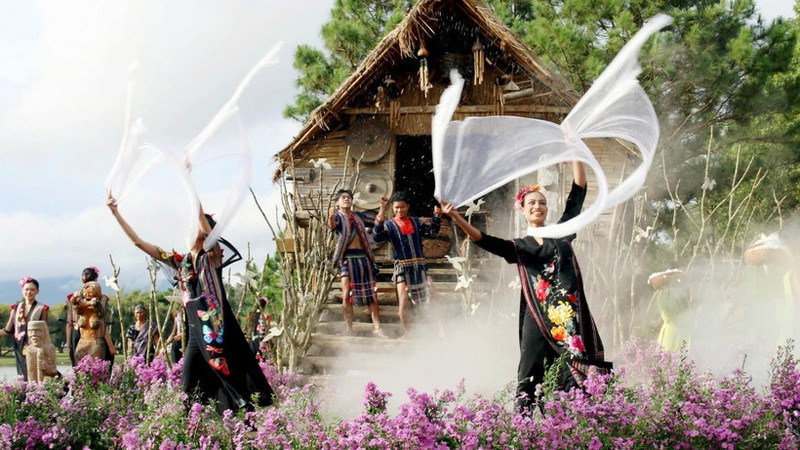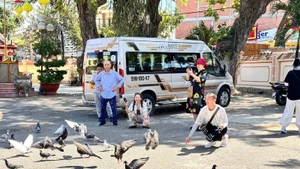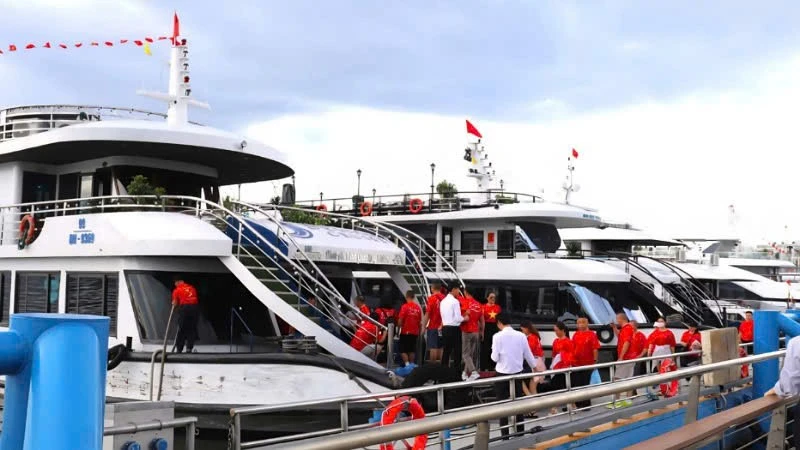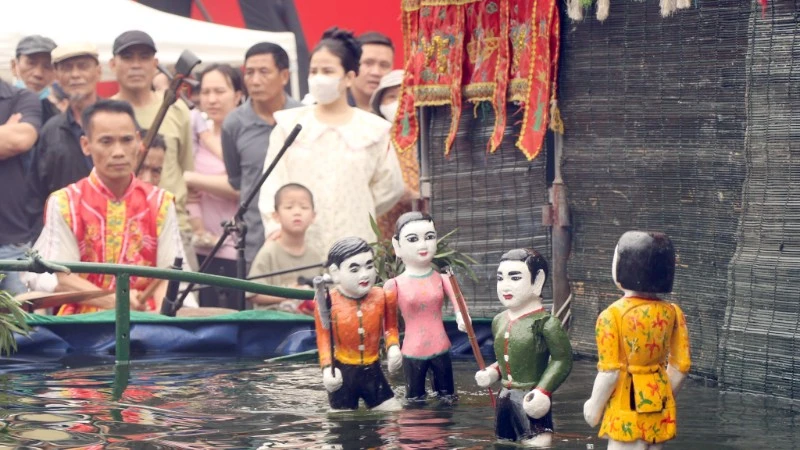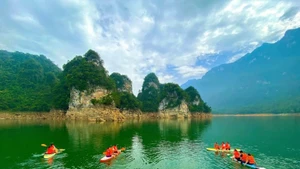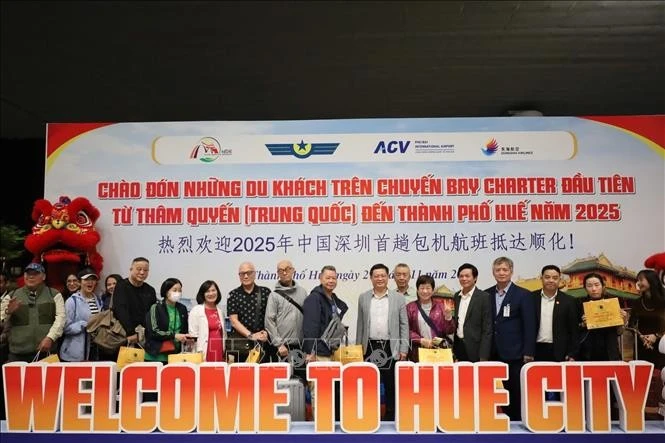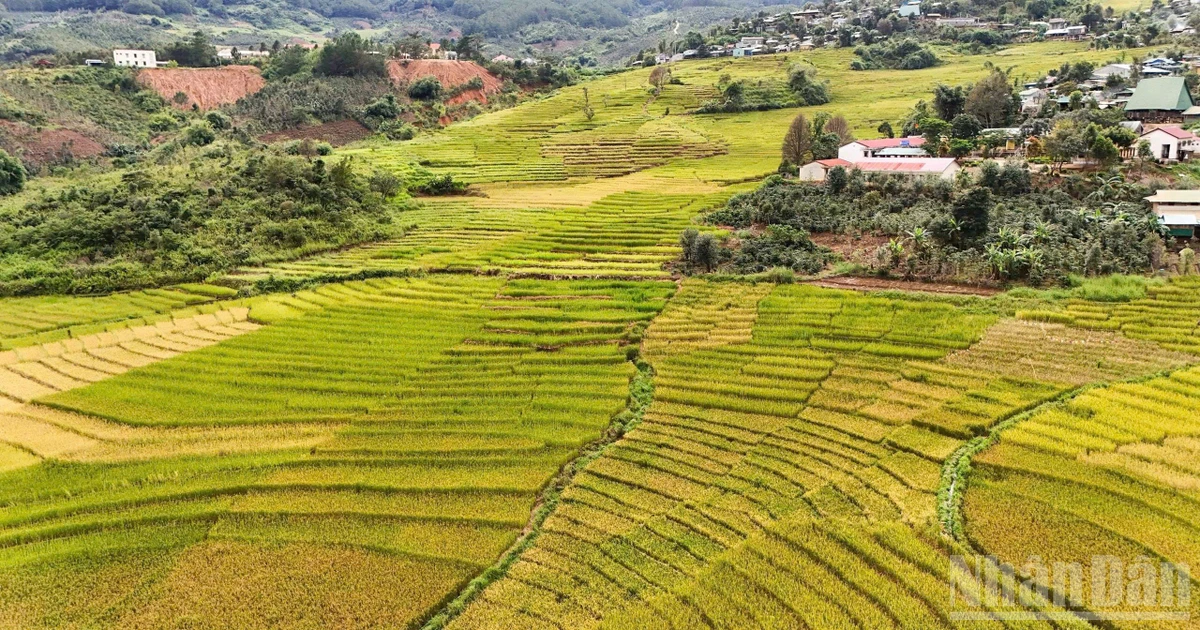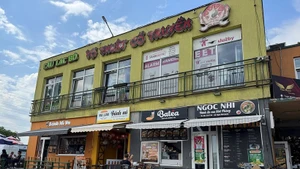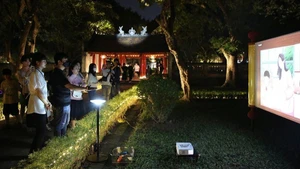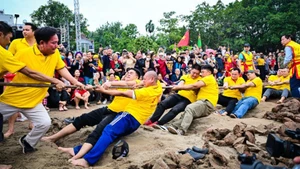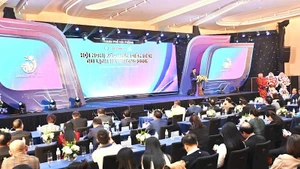Memorable cultural experiences
As the sun dipped behind the mountains, the villages at the foot of Lang Biang glowed in the flicker of firelight. That evening, I joined a group of visitors from afar, returning to this land to immerse ourselves in the pulsating rhythms of gong and xoang dance.
While trying his hand at beating the gongs among dozens of other tourists, Daniel, a visitor from Portugal, shared: “I’ve travelled to many countries in the East, and this is a truly fascinating experience. The culture of this highland region has an extraordinary charm. I will definitely tell my friends about this place.”
The villages of Dang Gia, Bon Dung and Bnoh at the foot of Lang Biang have been officially recognised as residential neighbourhoods for more than 20 years, yet many people still refer to them by their traditional village names.
“Over the years, cultural-based tourism in this area has consistently captivated visitors. The emergence of more than ten gong performance groups has helped preserve traditional cultural values while also generating economic benefits as these practices are adapted to the tourism environment,” said Tran Thi Chuc Quynh, Secretary of the Party Committee of Lang Biang ward, Da Lat.
Leaving the highlands, tourists can continue their journey towards Lam Dong’s coastal areas to experience the bustling life of fishing villages, learn about more than 300 years of history of Phan Thiet, and explore architectural and artistic relics, as well as festivals tied to maritime culture and spirituality.
To the west of Lam Dong lies the UNESCO Global Geopark Dak Nong, where visitors can explore national scenic sites such as C3–C4 Cave, Cave 7 and Cave 8, the Nam Nung and Ta Dung ecological zones, along with numerous tangible and intangible cultural heritages. During his trip, Professor Eric Jose Olmedo Panal, Director of the International Institute of Ho Chi Minh City University of Economics and Finance, remarked: “Lam Dong has a diverse culture with traditional heritages of different ethnic groups, both tangible and intangible. These are valuable assets that can form attractive tourism products and help promote the province to domestic and international visitors.”
According to Nguyen Van Loc, Director of Lam Dong Department of Culture, Sports and Tourism, the province currently has 144 relic sites, including three special national relics, 59 national relics and 82 provincial relics; along with UNESCO-recognised cultural heritages such as the Space of Gong Culture in the Central Highlands, the Nguyen Dynasty Woodblocks, Langbiang World Biosphere Reserve, the Cham pottery craft village, Da Lat – UNESCO City of Music; 10 national intangible cultural heritages and three national treasures; together with craft villages, traditional festivals and unique customs of 49 ethnic groups, forming a rich and diverse cultural and tourism resource.
Cultural tourism is a form of tourism developed on the basis of exploiting cultural values, helping to preserve, promote and spread traditional cultural values — a development model characterised by “co-existence”. Director of Viet Nam’s Cultural Heritage Department Le Thi Thu Hien noted: “With its existing cultural tourism resources, Lam Dong can link them together to build a chain of attractive tourism products, especially distinctive cultural tourism.”
Creating appeal from cultural identity
In Mui Ne–Phan Thiet, after exploring scenic sites and listening to the sound of waves along the beaches, visitors can seek out traditional fish sauce-making villages, which date back to the 18th century, to discover the cultural values behind each drop of essence from the sea.
Nguyen Van Khoa, Chairman of the Lam Dong Tourism Association, noted that Lam Dong has substantial advantages and ample room to develop experiential and community-based cultural tourism. In recent years, the province’s traditional fish-sauce villages have become increasingly popular with visitors. According to Khoa, to fully unlock this existing potential, the infrastructure system must be synchronously upgraded, especially transport infrastructure; and tourism products need to be developed in a well-structured and distinctive manner in order to enhance the competitiveness of each destination.
At present, the Bau Trang U&ME tourist area in Hoa Thang commune, Lam Dong Province welcomes between three and four thousand visitors each day. According to Nguyen Van Hung, Executive Director of the tourist site, sustainable tourism development in Lam Dong requires integrated linkages between the great highlands, the blue sea and the land of flowers, thereby creating a coherent tourism ecosystem. Most importantly, throughout the experience, visitors must be able to explore the layered cultural and historical narratives of the land, so that their journey truly resonates and leaves a lasting impression.
Many experts point out that cultural tourism products in Lam Dong remain limited in creativity and have not been developed proportionately to the province’s potential; valuable cultural resources in many regions have yet to be invested in or transformed into distinctive tourism products; cross-regional linkages in cultural tourism development remain insufficient.
Dr Phan Bao Giang, Vice Rector and Head of Marketing Faculty at Ho Chi Minh City University of Economics and Finance, observed that the three “core” areas of Lam Dong each possess their own distinct “styles”, making it necessary to “map” customer positioning for each route and destination. “When the province systematises its potentials and local styles; clearly defines target markets and distinctive products for each area; respects cultural identity; and implements a unified infrastructure connectivity strategy, Lam Dong’s tourism will truly become an economic pillar,” he suggested.
Lam Dong Province identifies tourism as one of its pillars for socio-economic development, aiming to build Lam Dong into a high-quality tourism hub with both national and international branding. Chairman of the Lam Dong Provincial People’s Committee Ho Van Muoi emphasised: “Based on the cultural tourism resources in each region of the province, we will shape and connect them to tell compelling stories about history and culture, creating distinctive tourism products that attract domestic and international visitors.”
